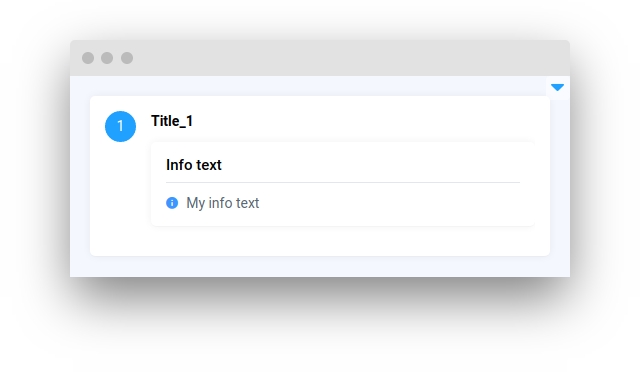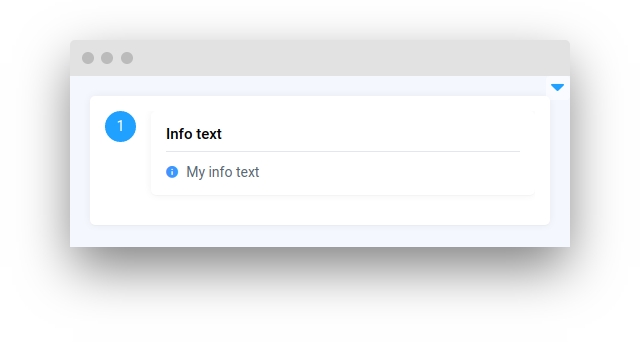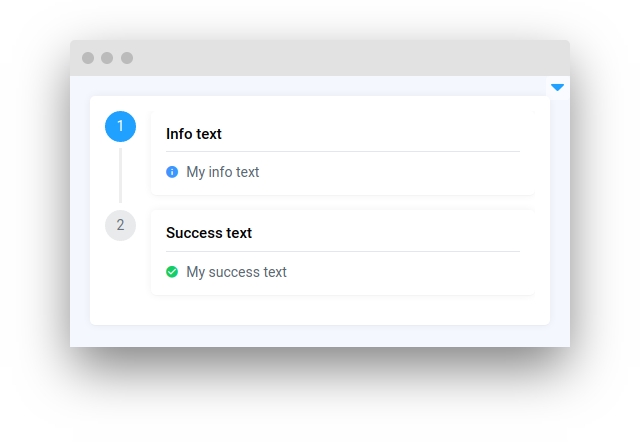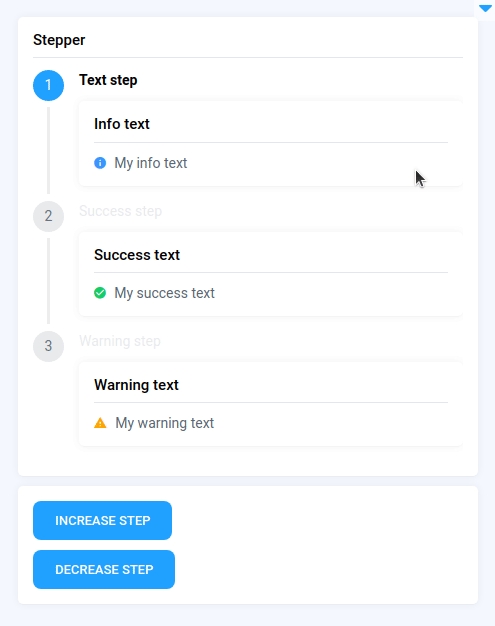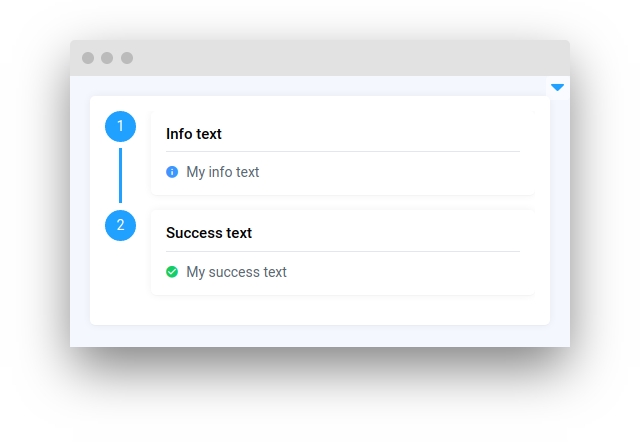Introduction
Stepper Stepper widget is a helpful tool for navigating through complex interfaces and exploring large sets of data.
Function signature
Copy Stepper(
titles=[],
widgets=[],
active_step=1,
widget_id=None,
) Parameters
Parameters
Type
Description
List of widgets provided in Stepper
titles
Determine widgets titles.
type: list
default value: []
Copy text_info = Text(text="My info text", status="info")
card_info = Card(title="Info text", content=text_info)
stepper = Stepper(
titles=["Title_1"],
widgets=[card_info],
) Determine widgets provided in Stepper.
type: list
default value: []
Copy text_info = Text(text="My info text", status="info")
text_success = Text(text="My success text", status="success")
card_info = Card(title="Info text", content=text_info)
card_success = Card(title="Success text", content=text_success)
stepper = Stepper(widgets=[card_info, card_success]) active_step
Set active step.
type: int
default value: 1
Copy text_info = Text(text="My info text", status="info")
text_success = Text(text="My success text", status="success")
card_info = Card(title="Info text", content=text_info)
card_success = Card(title="Success text", content=text_success)
stepper = Stepper(widgets=[card_info, card_success], active_step=2) ID of the widget.
type: str
default value: None
Methods and attributes
Attributes and Methods
Description
set_active_step(value: int)
Returns active step value.
Mini App Example
You can find this example in our Github repository:
Import libraries
Copy import os
import supervisely as sly
from supervisely.app.widgets import Card, Container, Stepper, Text, Button
from dotenv import load_dotenv Init API client
First, we load environment variables with credentials and init API for communicating with Supervisely Instance:
Copy load_dotenv("local.env")
load_dotenv(os.path.expanduser("~/supervisely.env"))
api = sly.Api()
Copy text_info = Text(text="My info text", status="info")
text_success = Text(text="My success text", status="success")
text_warning = Text(text="My warning text", status="warning")
card_info = Card(title="Info text", content=text_info)
card_success = Card(title="Success text", content=text_success)
card_warning = Card(title="Warning text", content=text_warning)
Copy stepper = Stepper(
widgets=[card_info, card_success, card_warning],
titles=["Text step", "Success step", "Warning step"],
)
card = Card(
title="Stepper",
content=stepper,
)
Copy button_increase = Button(text="Increase step")
button_decrease = Button(text="Decrease step")
buttons_container = Container(widgets=[button_increase, button_decrease]) Create app layout
Prepare a layout for app using Card widget with the content parameter and place widget that we've just created in the Container widget.
Copy buttons_card = Card(content=buttons_container)
layout = Container(widgets=[card, buttons_card]) Create app using layout
Create an app object with layout parameter.
Copy app = sly.Application(layout=layout) Add functions to control widgets from python code
Copy @button_increase.click
def click_button():
curr_step = stepper.get_active_step()
curr_step += 1
stepper.set_active_step(curr_step)
@button_decrease.click
def click_button():
curr_step = stepper.get_active_step()
curr_step -= 1
stepper.set_active_step(curr_step) 